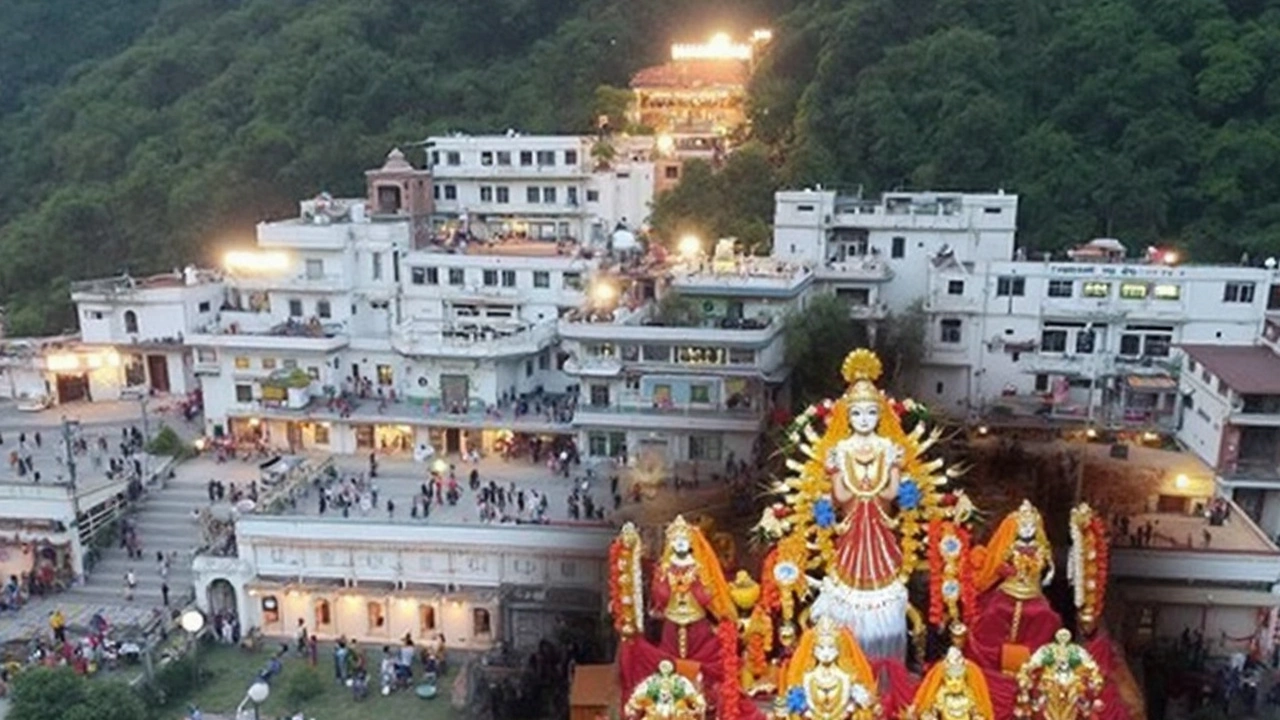Navratri: Nine Nights of Celebration and Spirituality
When you hear Navratri, a nine‑night Hindu festival honoring the goddess Durga, marked by fasting, prayers, and vibrant dances. Also called Nine Nights, it brings families together and sets the stage for community gatherings across India. The central idea is the triumph of good over evil, and that story fuels every ritual you’ll see during the season.
One of the biggest figures in the celebration is Durga, the fierce warrior goddess worshipped during Navratri. Devotees fast, chant her name, and create elaborate altars that depict her ten arms battling demons. This devotion isn’t just personal; it shapes whole neighborhoods as people share meals after sunset, exchange wishes, and help each other keep the fast. The practice of fasting requires discipline, yet it also opens space for reflection and gratitude.
Music, Dance and Community Vibes
When the sun sets, the streets fill with the rhythmic beats of Garba, a traditional circle dance performed by women and men during Navratri. Garba encapsulates cultural storytelling—each step mirrors the myth of Durga’s victory. In Gujarat, the dance often starts slow and builds into a fast‑paced celebration, inviting newcomers to join in without any prior training. The energy of Garba influences community bonding, turning strangers into friends by the end of the night.
Just next to Garba, you’ll hear the sharp clatter of sticks in Dandiya, a stick‑rhythm dance that accompanies Garba during Navratri. Dandiya requires quick footwork and coordination, making it a fun test of skill for young and old alike. The dance sparks friendly competition, and many local groups organize mini‑tournaments that draw crowds from nearby villages. This friendly rivalry creates a lively atmosphere that keeps the festival spirit alive well beyond the temple grounds.
Beyond the dance floor, Navratri also shapes the calendar of other Hindu festivals. The final night, known as Vijayadashami or Dussehra, marks the end of the nine nights and often includes fireworks, drama performances, and the symbolic burning of effigies. This climax connects Navratri to broader narratives of courage and moral victory that recur throughout the Hindu year. Whether you’re watching a Ramlila or joining a local theater troupe, the themes of bravery and righteousness stay front and center.
Food plays a surprisingly central role, too. While many observe a strict fast, others enjoy special dishes like sabudana khichdi, fruit chaat, and sweet kheer. These foods provide the energy needed for long evenings of dancing and prayer. Regional variations add flavor—people in Maharashtra might serve “puran poli,” while in West Bengal, “kheer” becomes the star dessert. The culinary diversity highlights how Navratri adapts to local tastes while keeping its core purpose intact.
Modern technology has also found its way into the celebrations. Live‑streamed aartis let family members abroad join the rituals, and social media platforms buzz with photos of garlands, dance videos, and festive outfits. This digital twist expands the reach of Navratri, linking diaspora communities back to their roots. Yet the heart of the festival—honoring Durga, sharing food, and dancing together—remains unchanged.
All these elements—devotion to Durga, the beats of Garba, the stick‑clash of Dandiya, the seasonal foods, and the digital connections—show why Navratri is more than just a holiday. It’s a living tradition that blends spirituality, culture, and community in a way few other festivals can. Below you’ll find a curated collection of stories, updates, and insights that capture the spirit of Navratri from every angle.
